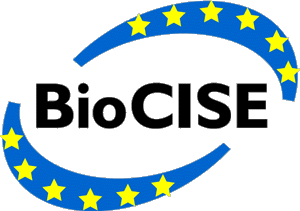 |
Resource Identification for a
Biological Collection Information Service in Europe Results of the Concerted Action Project |
 |
Resource Identification for a
Biological Collection Information Service in Europe Results of the Concerted Action Project |
[Contents] [BioCISE Home | The Survey | Collection catalogue | Software | Standards and Models]
Pier-Luigi Nimis
P. 51 in: Berendsohn, W. G. (ed.), Resource Identification for a Biological Collection Information Service in Europe (BioCISE). - Botanic Garden and Botanical Museum Berlin-Dahlem, Dept. of Biodiversity Informatics.
The Italian BioCISE meeting took place at the Natural History Museum of Verona in June 1999, supported by a generous grant of the Region of Veneto. More than 100 participants presented a fair and decidedly unusual mix of zoologists, botanists, mycologists and palaeontologists. This diversity of academic disciplines was mirrored by a corresponding variety of institutions: universities, national, regional and very local museums, botanical gardens, various research centres, and holders of private collections. Especially important was the presence of Italian Regional authorities. Recent legislation has put the "Environmental and Cultural Heritage" of the country under one umbrella, which is supposed to cover a painting of Titian in the Accademia of Venice as well as a beetle preserved in the local museum. Obviously, attention will not primarily focus on the beetle. However, Italy - especially due to the activity of scholars in the Nineteenth century - hosts some of the most important biological collections in the World. Many nomenclatural types are preserved here, access to which is fundamental for evolutionary biology but still all too difficult for the international scientific community.
National legislation has largely assigned the responsibility for these matters to the 21 Italian Regions. Some of them (e.g. Emilia-Romagna, Lazio, Lombardia, Veneto, all represented at the meeting) have already started cataloguing projects. In some cases, however, systems used for decades to catalogue paintings, sculptures and monuments were proposed as general guidelines. It is excellent that Regional Authorities are willing to spend substantial amounts of money, but guidelines clearly have to be brought to a state adequate for computerization and networking of biological research collections.
The spectrum of initiatives presented at the meeting gave testimony to genuine efforts for computerising biological collections by the holders themselves, including many private or "local" collections, which are very important in Italy. While national - and especially some regional - authorities have correctly tried to impose some general standards (all of which require discussion), during the meeting we have enjoyed a nice example of Perfect Anarchy. All participants were proudly showing "their" database, "their" data structure, and "their" preferred system. Especially those with project funded by the Regions often concluded with something like "my database is the best". Nevertheless, several talks showed interesting and important examples, e.g. the checklist of Italian Animals (Italy is the only country in the World to have completed such an Herculean task), the links between collection data and GIS systems, a project for computerizing living collections in Botanic gardens, and several beautiful ways to depict biological information is a user-friendly way. At least 50% of the talks referred to data already available on-line.
A very lively discussion followed the presentations. General agreement was reached that international standards are fundamental to avoid a duplication of efforts leading to a heap of isolated, albeit bold endeavours.
© BioCISE Secretariat. Email: biocise@, FAX: +49 (30) 841729-55
Address: Botanischer Garten und Botanisches Museum Berlin-Dahlem (BGBM), Freie
Universität Berlin, Königin-Luise-Str. 6-8, D-14195 Berlin, Germany